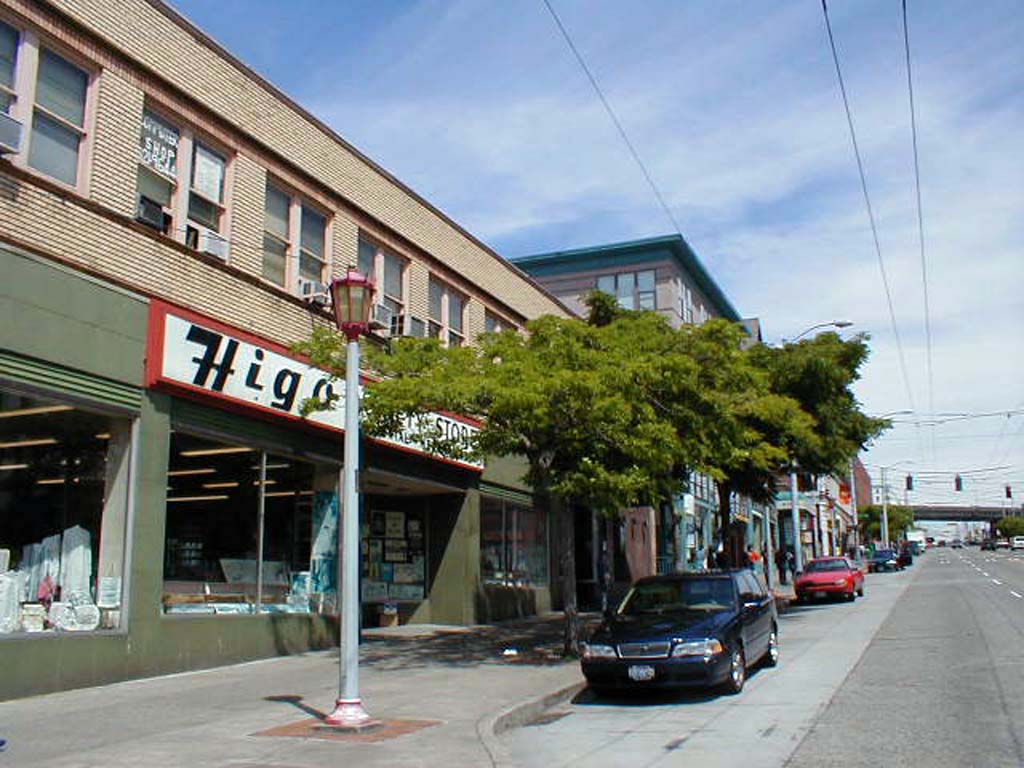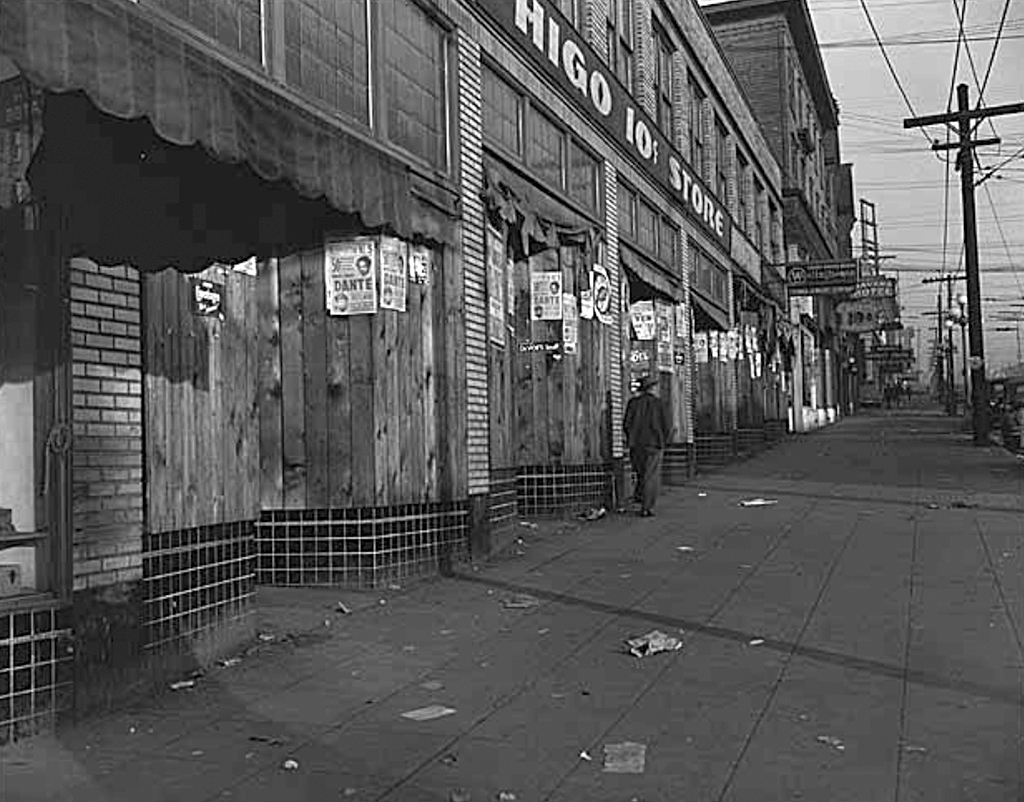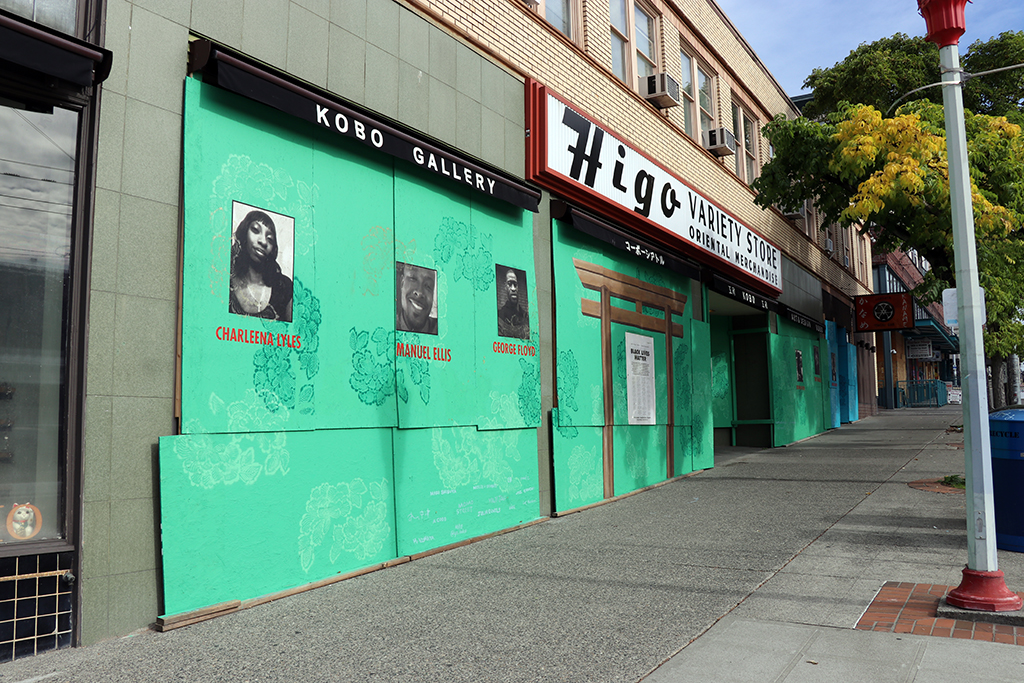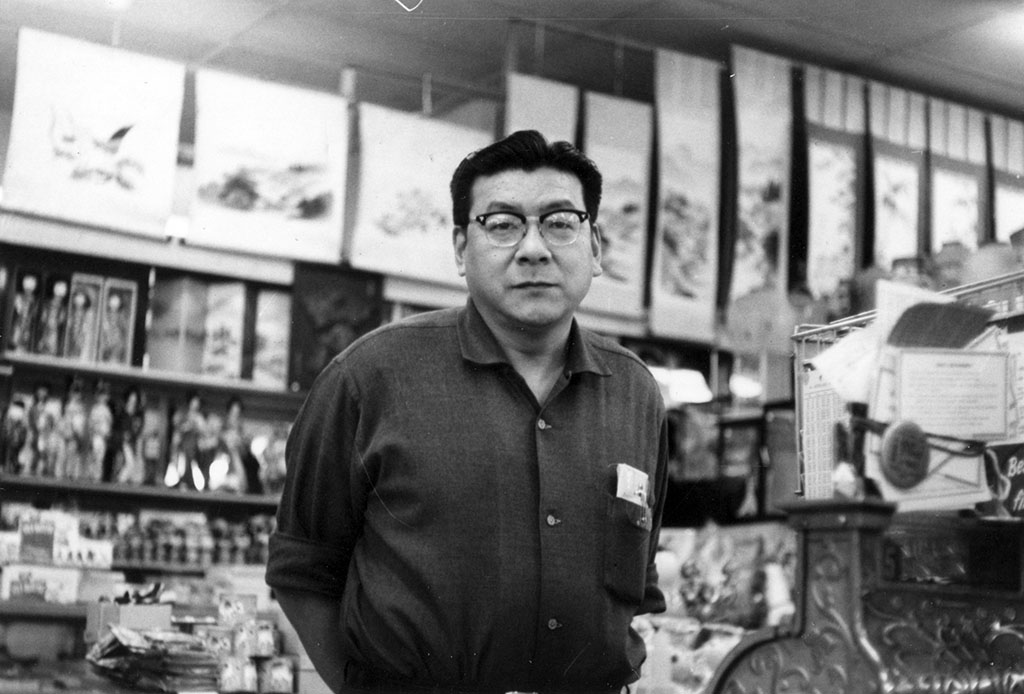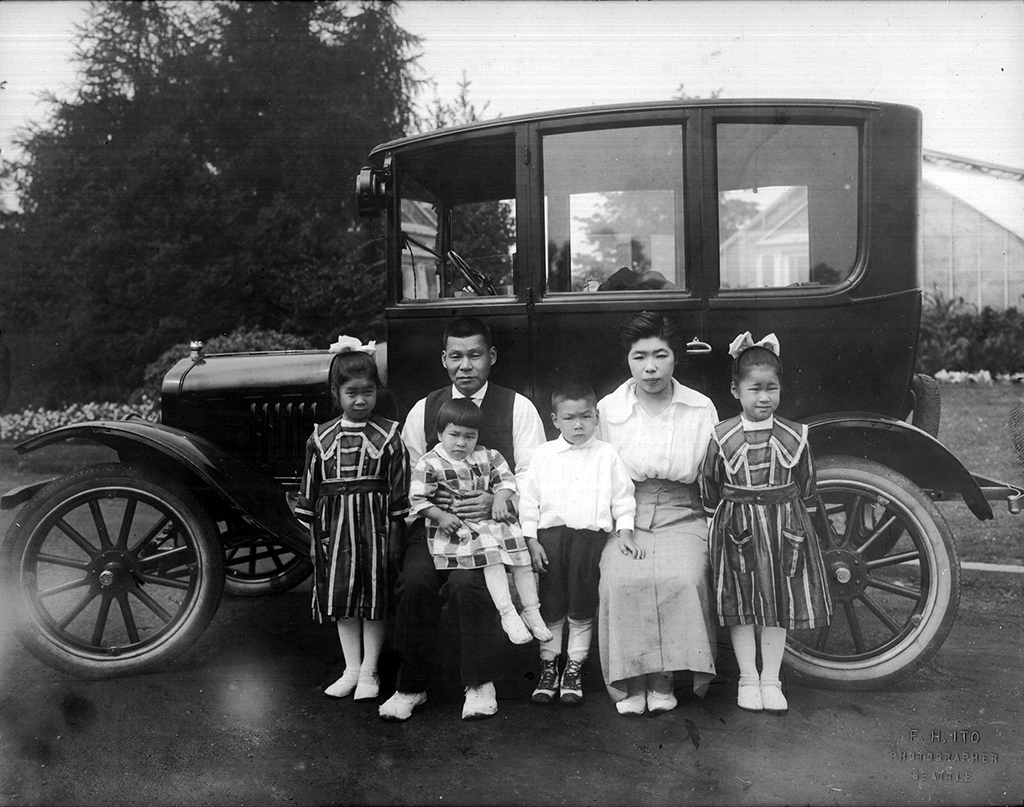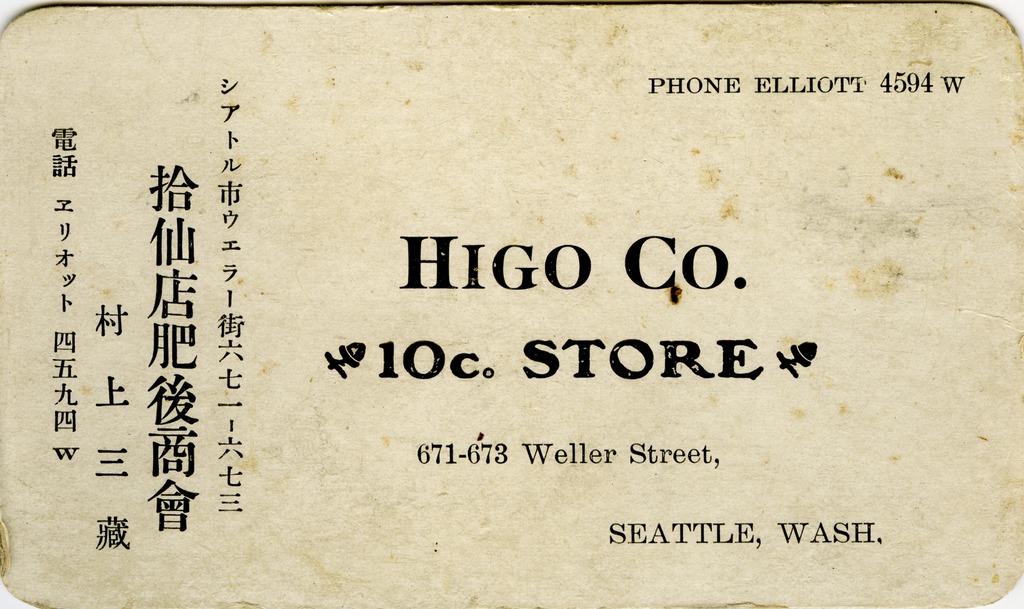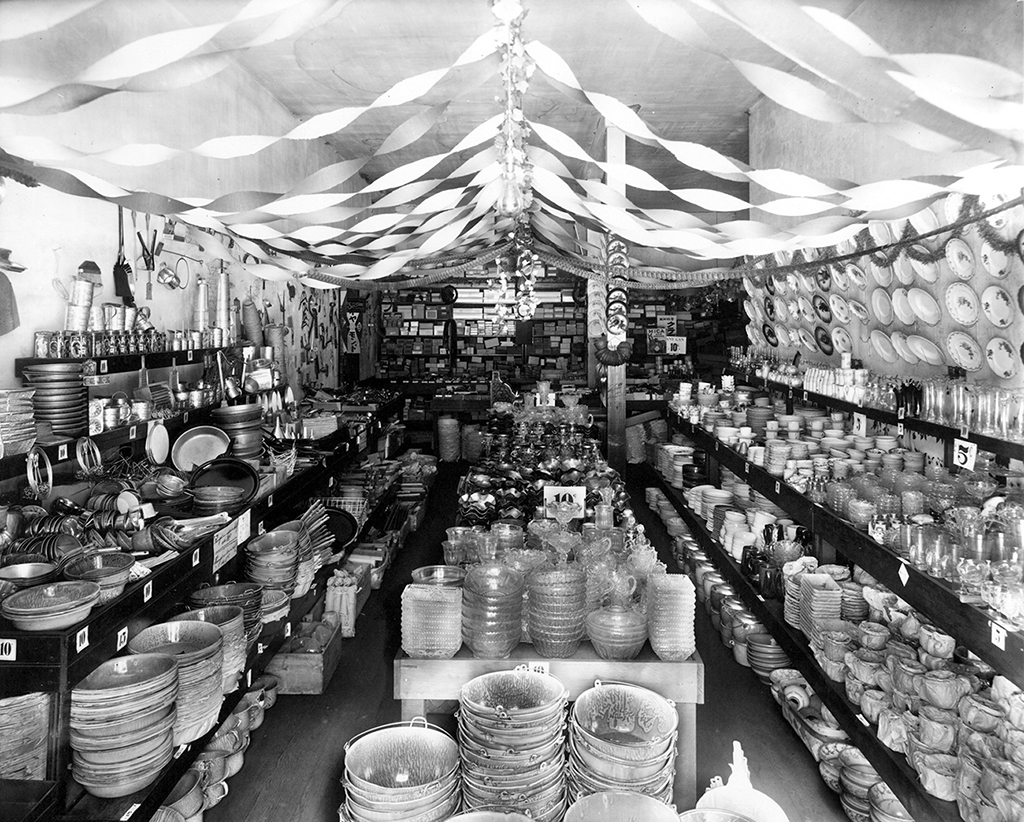-
Higo Ten-Cent Store
604 S Jackson Street
604 S Jackson Street
The Higo Ten-Cent Store (named Higo Variety Store in 1957) was the primary business in the Jackson Building, a low-rise commercial office and retail storefront building that was completed in 1932. Very few buildings were constructed in the Depression years, but Sanzo Murakami and his wife Matsuyo believed that such a building was necessary for the neighborhood and would help serve the community by providing a variety of services and commercial needs.
The Murakami family relocated the store that they had established at 6th and Weller in 1909 at completion of their new building. The couple, together with their four children, operated the store every day of the year and lived in the building in a space behind the general store and in one of the 26 office spaces that was fashioned for their living quarters. The store sold a bit of everything, from food to kitchenware, toys to hardware, and clothing and supplies that would be needed by CID residents.
Tucked between and behind the Jackson Building and the N-P Hotel there is a small green open space that was used by the family as a place to escape the business and bustle of community life and work. As a young girl, daughter Chiyo would often use this space to think, write in her diary, and play with her dog when she was not working in the store or going to school. Now called Chiyo’s Garden, the space is a remembrance of her life and 1937 death from tuberculosis. The gateway to this space can be seen by going north through Nihonmachi Alley to the east of the Jackson Building. Since 2004, Kobo Shop and Gallery-at Higo has occupied the historic store space in this building. Amid the artwork specialty items for sale by Japanese and Pacific Northwest artisans, the store contains memorabilia and artifacts that tell the history of the Higo Store and the Murakami family.
Walk east on Jackson. When you reach Maynard, look across the street to the east to see the C&T Building.

